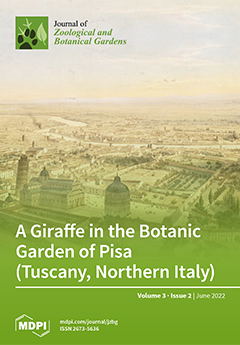Zoos engaged in a range of communication types with prospective visitors during the temporary closures necessitated by the COVID-19 pandemic. This study sought to (1) investigate social media reports and public responses to zoo-animal-related posts over a one-year period during COVID-19 lockdowns; (2) understand the use of reporting language in news articles concerning animal responses during zoo closures, and to investigate whether this differed across species; and (3) investigate how keepers perceived general animal behavior, and how they perceived animal behavior in keeper–animal interactions, during the COVID-19 facility closures. Data were collected from BIAZA-accredited zoos’ Facebook pages (March 2020 to March 2021) and news reports (Google search outputs from 20 March to 5 April 2021). Keeper perceptions were captured via questionnaires (May to August 2021). Data were collected on taxa, the reported behavioral changes and the language used in media communications. In Facebook posts and news reports, mammals were more frequently represented than was expected (
p < 0.05). Behavioral responses were more frequently negative (
p < 0.05) and less frequently positive or neutral (
p < 0.05). Keepers reported overall behavioral changes, as well as changes during their own interactions with animals. On Facebook, mammals were described using a combination of behavioral descriptions and anthropomorphic terms, which were used more frequently than was expected (
p < 0.05). In the news reports concerning primate species, anthropomorphic descriptions were used more frequently than expected (
p < 0.05), while behavioral descriptions were used less frequently than expected (
p < 0.05). The reports regarding the Carnivora were the reverse of this. This study enabled an understanding of the impact of the temporary closures on the animals, and how this impact was communicated to the public. The findings may reflect the relationships that humans have with animals and the need for communication methods that will capture visitors’ interest and induce empathy with the various species.
Full article





